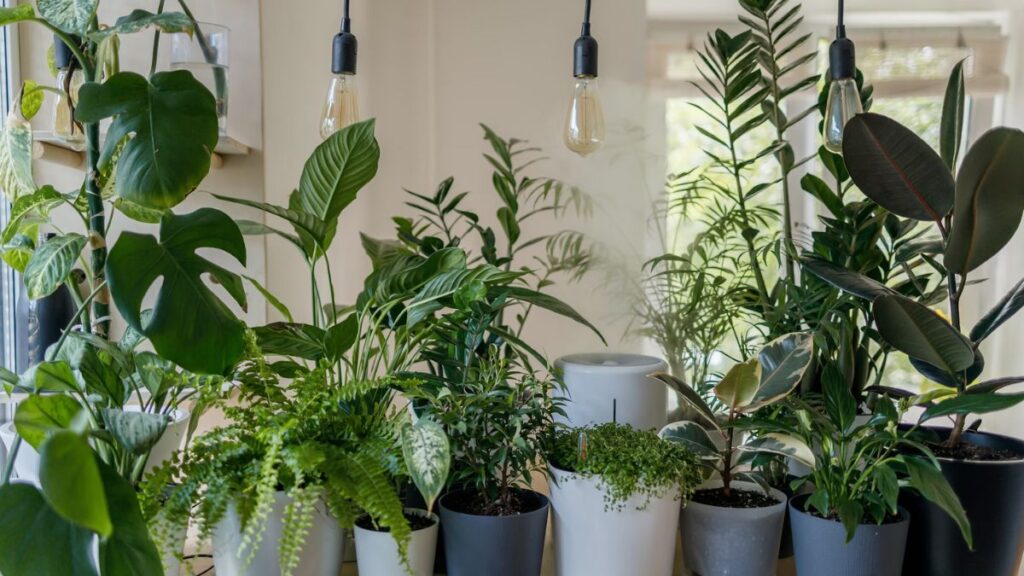7 Essential Routines to Keep Your Houseplants Healthy and Disease Free

Who doesn’t love houseplants? They are such a quick and easy way to transform aesthetics and calm your mood. They enhance home décor, elevate mood and create lively green corners.
However, managing houseplants is no easy task. Every type of houseplant is unique and there is nothing like ‘one size fits all’ when it comes to caring for them. Some need frequent watering, others hate it, some like long hours of sunlight while others may start wilting under too much exposure to the sun.
Here we list 7 easy and effective ways to ensure your houseplants remain healthy and bring a positive charm in your house.
1. Don’t Jump to Conclusions
If a houseplant is wilted and leaves are turning yellow or falling may not for sure be a signal that the plant is dead. If the stem is still flexible and some green leaves left, this means there is scope for revival. Yellow leaves and soggy stems are signs of overwatering, while brown leaves could be an issue of underwatering. Yellow leaves limited to older parts of the plant simply means the plant is ageing. Depending upon the situation, you might want to adjust the watering schedule to suite the requirements of the plant or prune dead portions of the plant to stimulate new growth.
2. Evaluate Light Exposure
Light is an important component, necessary for plant growth and different plants have different requirements of exposure to light. Check your plant’s light requirements before deciding on a suitable placement around the house with the right amount of light intensity and duration.
3. Check Plant Roots
Sometimes if nothing else seems to work, take the plant out of its pot to inspect its roots. if the roots are soggy, prune the damaged portions of the root, let them be in fresh air for a while and then repot with some fresh soil added. If the soil feels dry and cracked, make sure to water more frequently as this plant is starved of water.
4. Prune Dead Leaves
Dead leaves often hang on for a while before they fall away. In the case of houseplants, since there are no external factors such as strong wind or animals and birds to do the job, the dead or dying leaves hang on to the plants longer. This inhibits new growth and dying leaves may also attract insects and diseases. Prune off dying leaves, ensuring not to cut more than one-third of the plant at a time. This will keep your plant looking fresh, free from diseases and stimulate growth of fresh new leaves.
5. Check Watering Cycle
Houseplants are very sensitive to watering cycles. Since they live in captivity, they cant themselves get rid of excess water. Conversely, they can’t even source underground water, in the case of underwatering. So your watering cycle has to be just right and it varies with each plant variety. Both excess or underwatering can potentially damage the plant.
6. Repot if Necessary
Sometimes the plant grows so big that there is no more space left for its rootball to grow and the limited soil is unable to supply enough nutrients to the plant. In such a situation, it is best to repot the plant to one size bigger pot with some fresh garden soil added. In fact, you could remove all of the older soil, trim some unhealthy roots and repot with new soil, mixed with vermicompost for a new lease of life to the plant.
7. Check for Pests and Diseases
Since houseplants are more vulnerable to pests and diseases because they live in artificial environment, it is necessary to inspect them regularly for any signs of disease or pest infestation. Spray a solution of neem oil mixed with little dishwash liquid and diluted with water to keep away pests and diseases. You could use 5ml of neem oil, 2ml of dishwash soap mixed in 1 litre of water to make the spray and use it as often as needed. It is completely organic and harmless. Keep away from pets and children and do not get into eyes.
If you follow the above routines and place the plants at the most appropriate place in your house based on light intensity and duration, your plants should thrive and stay healthy. Be mindful of watering and fertilizing your plants depending on their individual needs as every plant type is unique with different needs so act accordingly.
With a little care and knowledge your green friends can last for years and keep uplifting both your mood and aesthetics for a long time.




